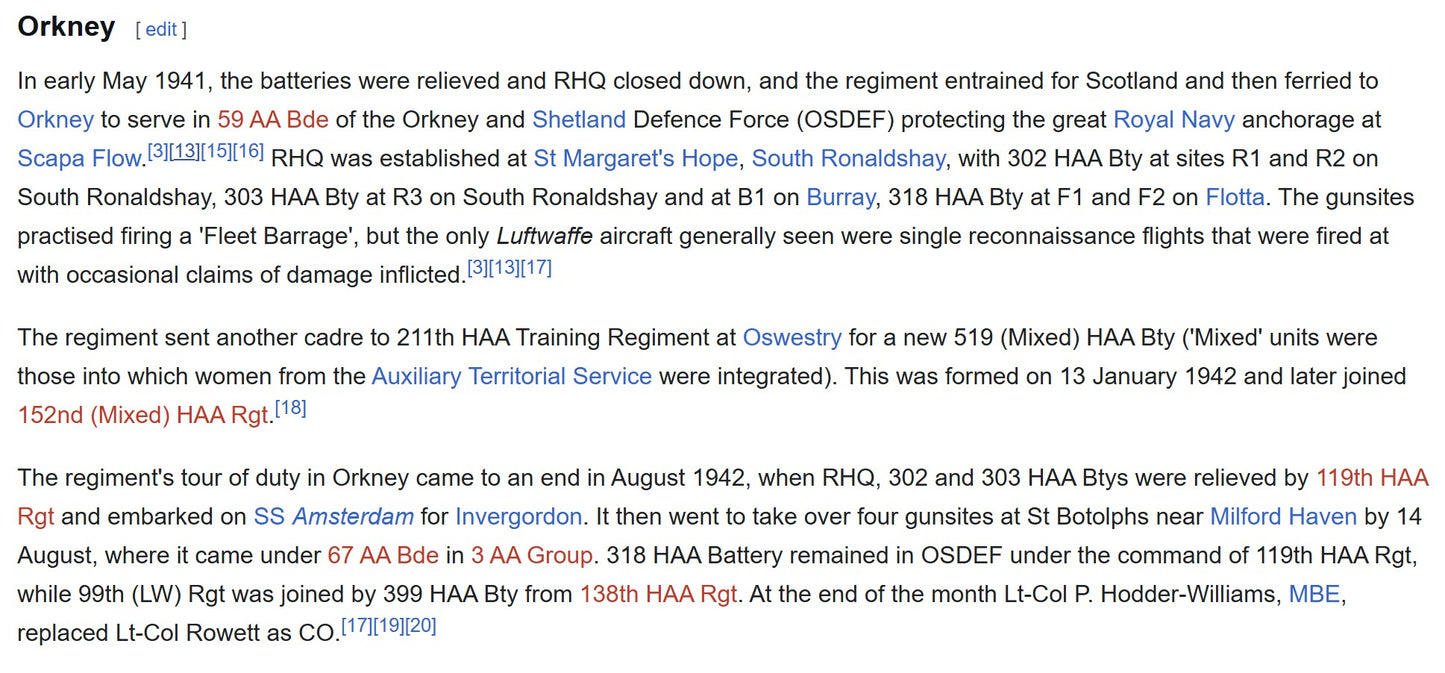























British Army Long Service & Good Conduct Medal - Warrant Officer 2nd Class George Frederick Fleming, Royal Electrical and Mechanical Engineers, late 302 Battery, 99th (London Welsh) Heavy Anti-Aircraft Regiment, Royal Artillery (TA)
British Army Long Service & Good Conduct Medal - 878834 W.O.CL.2. G. F. FLEMING. REME.
George Frederick Fleming attested for the Royal Artillery in 1938, receiving the service number 878834. He was serving as a Gunner in 302 Battery, 99th (London Welsh) Heavy Anti-Aircraft Regiment, Royal Artillery (TA) at the outbreak of the Second World War.
The 99th HAA Regiment had formed in April 1939 and was mobilised in August that year under Anti-Aircraft Command, initially defending London before later taking up key gun positions across south-east England. In the early war period – the “Phoney War” – 302 Battery rotated through sites around Mitcham, Streatham and Hayes Common, manning 3-inch AA guns, before receiving newer 4.5-inch HAA guns.
By June 1940, the regiment was deployed to the East Coast to take up positions in the Harwich Gun Defence Area, protecting vital naval and shipping routes from Luftwaffe attacks. The unit became heavily engaged during the Battle of Britain, firing on hostile aircraft from June–September 1940, and countering German minelaying and low-level raids targeting RAF airfields, ports and shipping lanes off Kent, Essex and Suffolk.
Through late 1940 and early 1941 the regiment took repeated part in the London Blitz, with 303 Battery detached to reinforce the capital’s defences while 302 Battery continued to protect airfields and coastal sites. Wilhelmshaven-based bombers and Italian aircraft flying from occupied Belgium were among the hostile forces encountered, with the regiment credited with multiple aircraft “kills”.
In May 1941, the regiment left the south-east and embarked for Orkney, joining the Orkney & Shetland Defence Force (OSDEF) under 59 AA Brigade, tasked with protecting the Royal Navy fleet anchorage at Scapa Flow – one of the most strategically important naval bases in Europe. 302 Battery manned gunsites on South Ronaldshay (positions R1 & R2), where they trained for “Fleet Barrage” fire and engaged occasional Luftwaffe reconnaissance aircraft.
It was during this period that Fleming was wounded, reported in the War Office Casualty List No. 543, dated 19 June 1941. The incident is recorded as occurring “Home”, confirming wounds sustained while on UK operational duties with 99 HAA Regiment. These wounds likely the result of an air raid.
Fleming recovered and remained in service, later transferring from the Royal Artillery to the newly-formed Royal Electrical and Mechanical Engineers (REME). His post-war career was long and distinguished: by 1948 he held the rank of Staff Sergeant, and by 1953 he was a Warrant Officer Class II, qualifying for the Queen Elizabeth II Coronation Medal while serving with REME (Territorial Army).
He continued to serve into the 1960s, being awarded the Long Service & Good Conduct Medal (LGSC) as a Warrant Officer Class II in 1966, with entitlement to the 1st Clasp by 1964, confirming over 21 years’ efficient service.
PLEASE NOTE: All research will be sent to the buyer via email. I am unable to provide printed copies, as I do not have access to a printer.
AJMS Medals























